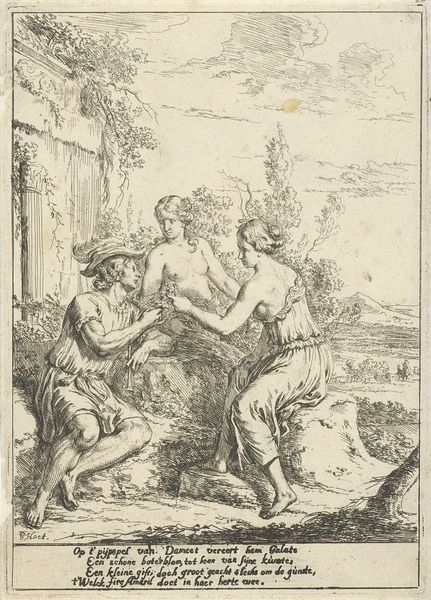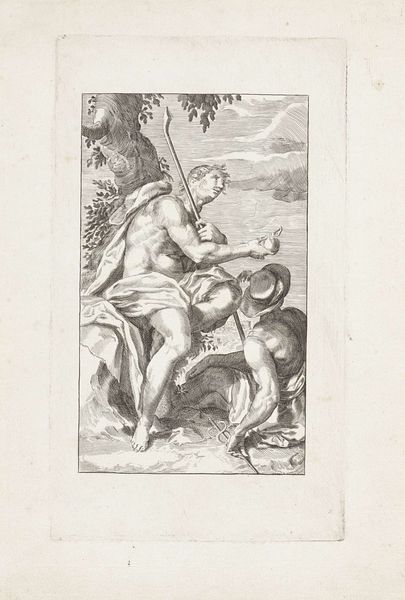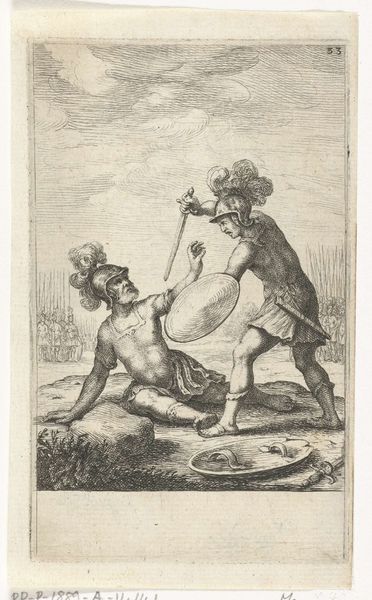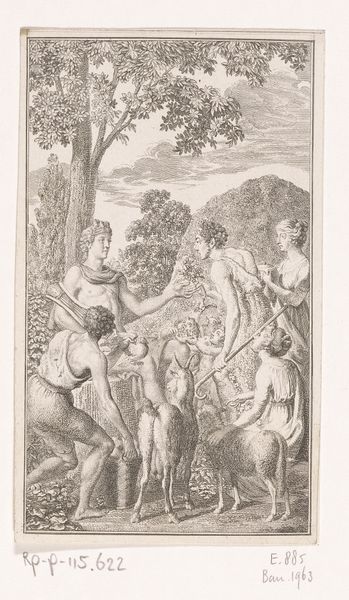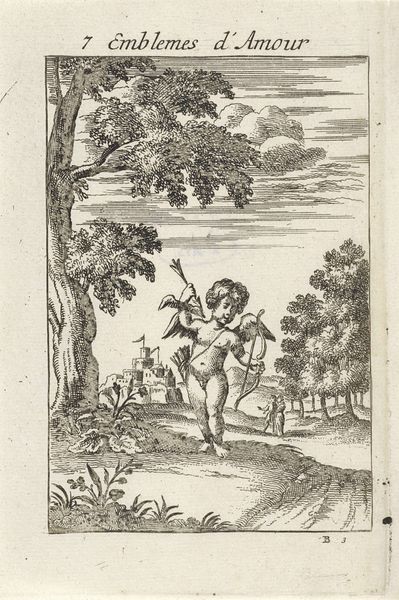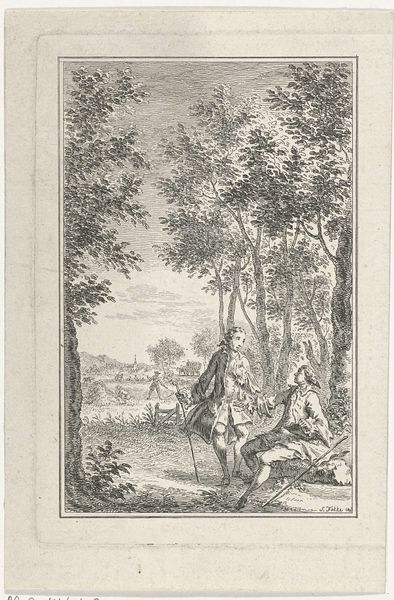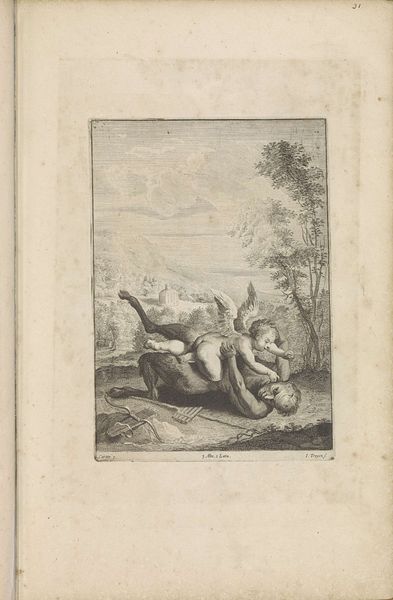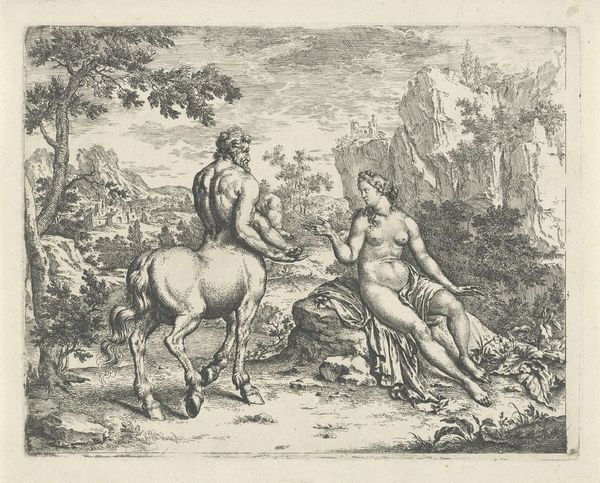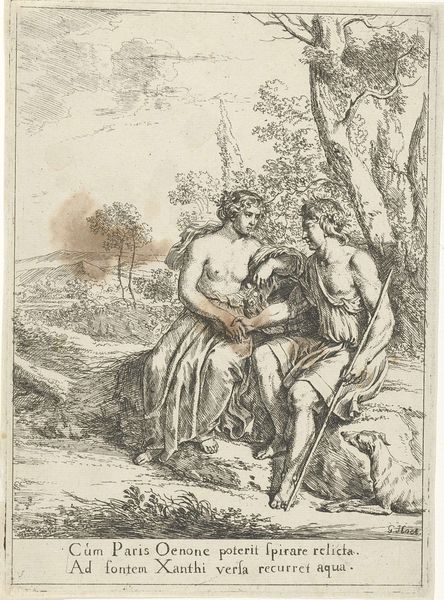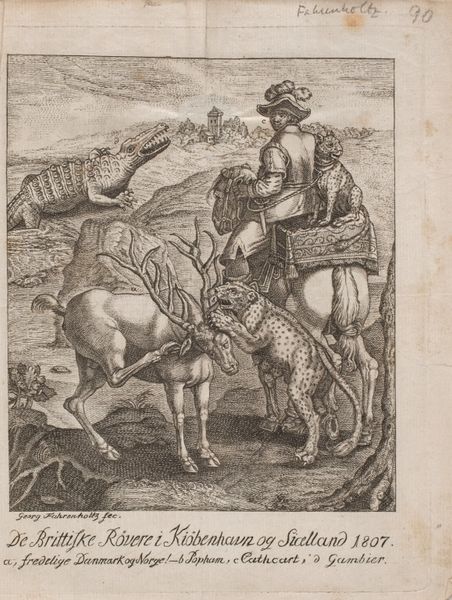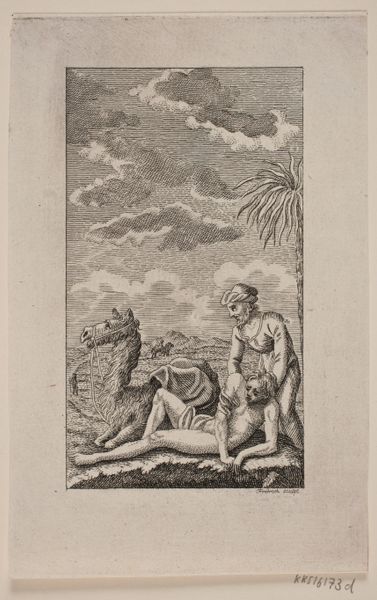
Dimensions: height 110 mm, width 60 mm
Copyright: Rijks Museum: Open Domain
Louis Wilhelm Chodowiecki made this print, titled ‘Orlando wijst naar zijn dode paard in de verte’, somewhere around the turn of the 19th century. In it we see two figures: one, clothed and mounted on a horse, gestures to the other, naked, who stands pointing at something in the distance. Chodowiecki was a German artist, active during the Enlightenment, an era when reason and individualism were prized. The image creates meaning through the visual codes of class and social status. The clothed figure riding the horse is contrasted with the naked figure on the ground. Who are these figures and what are their roles? The answer to that question would entail archival work, perhaps looking at the inventories of prints and drawings which can tell us how people at the time understood the image and its relevance for contemporary society. It serves as a reminder that art’s meaning is never fixed. It always changes based on the social and institutional contexts in which it is viewed.
Comments
No comments
Be the first to comment and join the conversation on the ultimate creative platform.

